 Chapter 1 Yomi and the Fury of Ninki Nanka by Davina Tijani and Adam Douglas-Bagley
Chapter 1 Yomi and the Fury of Ninki Nanka by Davina Tijani and Adam Douglas-Bagley
 Chapter 1 Yomi and the Fury of Ninki Nanka by Davina Tijani and Adam Douglas-Bagley
Chapter 1 Yomi and the Fury of Ninki Nanka by Davina Tijani and Adam Douglas-Bagley
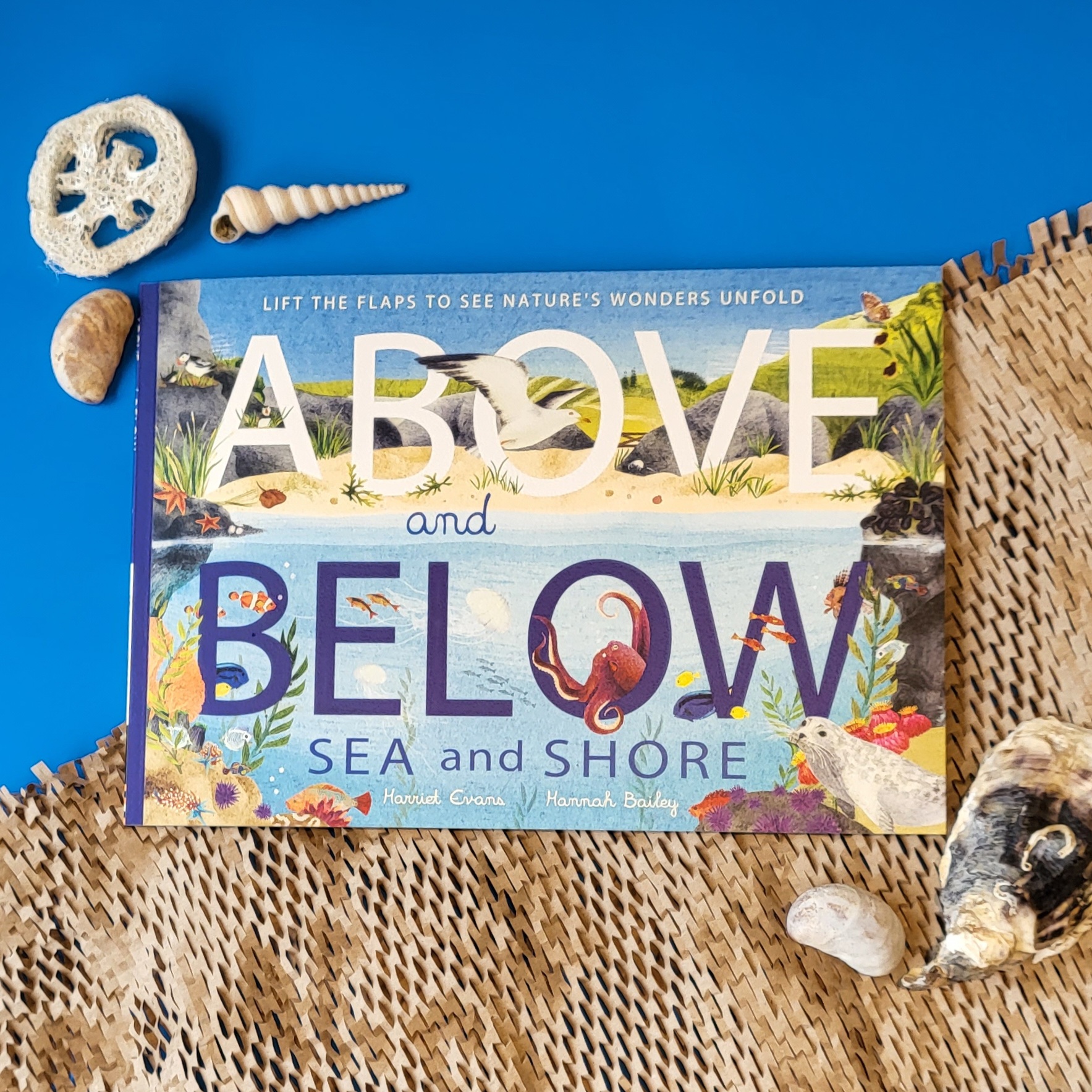
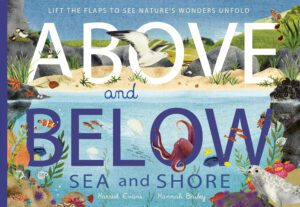
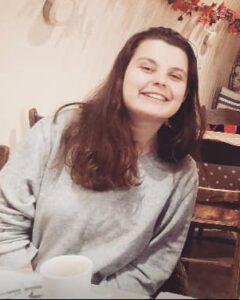
Above and Below is a unique split page and lift-the-flap book, can you explain how the book works?
The book showcases eight watery habitats from across the world, with facts about the creatures and plants that inhabit these places – or their geological features – on the left and Hannah Bailey’s beautiful illustrations on the right. Each artwork is divided into two using a split-page flap that allows the reader to delve further into these underwater worlds to discover what lies beneath the waves.
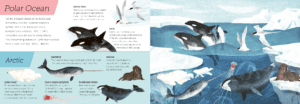
What kinds of areas of the world do you cover in the book?
We journey all around the planet, taking in some of the magnificent marine life along the way! From the sandy shallows of the British coastline to the amazing mangrove forests of Asia and from colourful coral reefs to the darkest depths of the deep ocean, there should be something to capture every young nature-lover’s imagination!
 Did you have to do a lot of research the content in the book, how did you go about deciding which facts to cover?
Did you have to do a lot of research the content in the book, how did you go about deciding which facts to cover?
I definitely did have to research the places – sadly my knowledge of habitats isn’t quite encyclopaedic just yet! I love finding stories in nature, so I was particularly drawn to the facts that helped me imagine the lives of the animals I was writing about or that challenged my expectations of these creatures. For example, did you know that seagulls stamp on the ground to imitate the sound of rainfall and trick worms out into the open where they can be quickly gobbled up? Or that plover birds build fake nests to draw predators away from their hatchlings?
How do you make the subjects you cover engaging for your readers?
I tried to pick a mixture of different creatures – some that readers would know and enjoy spotting but also animals that they might not have encountered before like the opalescent nudibranch (great name!) or the Irrawaddy dolphin. Similarly, we took care to pick a variety of different locations so we could have a broad sweep of different animals, plants and geographic features.
 What do you think of the look of the finished book, with illustrations by Hannah Bailey? Are there any spreads that stand out for you?
What do you think of the look of the finished book, with illustrations by Hannah Bailey? Are there any spreads that stand out for you?
Hannah Bailey’s illustrations are completely gorgeous, so I was thrilled! She’s a master at adding small details that make the whole habitat come to life and was so skilled at the shifts of perspective that you need for the split-page novelty to work. I love all the spreads but the kelp forest one has a special place in my heart. Otters are one of my favourite animals and I think Hannah’s depiction of the harbour seal and leopard shark on this spread are beautiful too!
Other than some fascinating insights into our world, what would you like young readers to take from your book?
That our planet is a much weirder and more wonderful place than we often remember. Learning more about the Earth’s incredible habitats – some of which are on our doorstep – can encourage us to live more thoughtfully and be aware that we share this world and have a responsibility to protect it.
How do you think this book could be used in classrooms?
One of the things I love about this series is how it taps into your curiosity – what else could be hiding inside a habitat? What might come out at night or what lived there eons before? Perhaps teachers could give each child their own simple seascape picture and assign them different oceans to use as inspiration to draw and write about underwater worlds. Or maybe they could read the book in class together and each child could choose an animal or plant and research it further to present their findings to the class? For younger children, perhaps you could match the animals mentioned to their habitat. It could be a great way to think about how different creatures are adapted to where they live and the relationships that we all have with our homes.
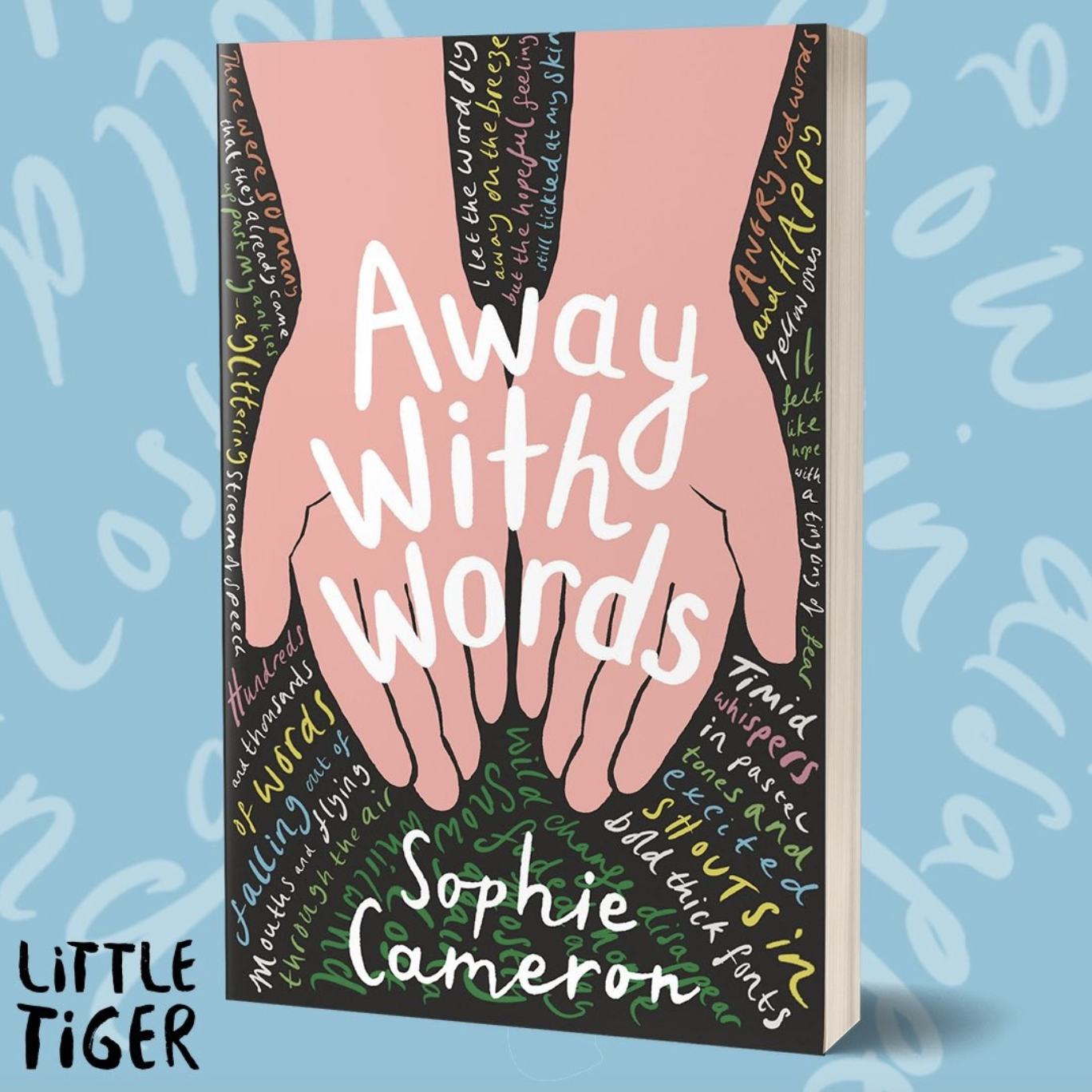
A Q&A with Away With Words author Sophie Cameron.
Out May 2023.

What is your latest book, Away With Words about?
Away With Words is set in a version of our world where we can see and touch the words that people speak, as well as hear them. The story is about 11-year-old Gala, who has just moved from Spain to Scotland with her dad to live with his boyfriend, and her difficulties with learning English and adapting to her new home. She makes a friend at her new school named Natalie, who has selective mutism and collects other people’s old speech. The girls begin writing messages to their classmates with the discarded words, but something goes wrong and it gets them into trouble.
What was the inspiration behind Away With Words?
I really love learning languages – I think I’ve studied around 15 over the years, though unfortunately I’ve forgotten most of them too! I often find producing different sounds really difficult, though, so the idea of speech having a physical dimension came from feeling like words were literally stuck in my mouth and unable to come out. I was also inspired by children’s books that use language in interesting ways, such as Sophie Someone by Hayley Long and Crongton Knights by Alex Wheatle.
Away With Words explores communication, did you do a lot of research for the novel?
I moved to Spain 7 years ago, and some parts of Gala’s story are based on my own experiences of living and working in Spanish and Catalan – the frustration of not being able to explain myself as well or as quickly as I’d like, or the thrill of realising that I’d made progress. But I chose to move abroad, whereas Gala is thrown into an environment where no one speaks her language and she has no say in the matter. I read up on ESL teaching and spoke to several people who had been similar situations – my wife moved from France to Scotland when she was 11, so her input helped a lot! I also did a lot of research on selective mutism for Natalie’s part of the story. We later had a sensitivity read done by a paediatric speech and language therapist, so it was really interesting to get their feedback.
What part of Away With Words are you most excited for young people to read?
I’m mostly excited for people to read about the concept and hopefully hear some of their own ideas about how communication would work in a world where speech was visible. Pip Johnson, the Senior Designer at Little Tiger who designed and illustrated the wonderful cover, has also done an amazing job getting creative with the layout of the text and it looks brilliant – so while I can’t take credit for that, I can’t wait to see what readers think of it!
How has Scotland and Spain influenced your writing?
Settings are really important for me, which is why all four of my published books so far take place in Scotland – it’s the place I know best, and being able to visualise the locations and include small, real-life details brings the story to life for me. Away With Words is set in Fortrose on the Black Isle, where I grew up, so it was really nice to be able to include some of my favourite places and weave them into Gala’s story. I’m finding that Spanish elements are cropping up in my writing more and more, though, and I have a few ideas for stories set here too.
What’s the best part about being a children’s author?
It’s always amazing to hear from readers, especially young ones, that they’ve enjoyed my books or that they’ve helped them in some way. Many of the books that have most influenced me are ones I read when I was young, so it’s a real privilege to think that someone could one day look back at one of my stories in a similar way.
Where and when do you do your best writing, and what are you working on at the moment?
I work best in cafes, preferably in the morning. Something about the noise and movement around me gives me a better focus on what I’m working on, and I’m far less likely to get distracted if I’m out of the house. Right now I’m hopping between a few projects: a contemporary MG novel, a YA fantasy, and what will hopefully be my first book for adults.
What does a ‘day off’ from writing look like for you?
I work for a communications agency and I have 3-year-old twins, so writing actually feels like a day off for me! When I’m not busy, I’m usually studying languages (right now I’m focusing on Korean, Italian and Gaelic), baking or watching TV.




Children at book events often ask me if all the cats and dogs in my Animal Stories series belong to me. I have to explain that I could never have written the books without the wonderful animals I’ve been lucky enough to share my life with, but I haven’t actually had fifty-five different puppies and kittens. (The fifty-fifth book in the series is published in April!) Even though I did grow up with one cat, two dogs, twelve gerbils, a mouse, three hamsters, a terrapin, some stick insects and a canary (not absolutely all at the same time).
Lots of the books are actually based on my own pets – Lost in the Snow, 
the very first book in the series  was inspired by Rosie, the stray kitten who adopted my family a little while before I was born. Our clever kitten was a family story, and I have such strong memories of making up adventures for her with my mum. When my editor at Little Tiger suggested writing a lost cat book, seventeen years ago, those stories were still in my head. In every story the poor kitten was having a terrible time – she was lost, stuck in the snow, hungry, being chased by a dog – but it was OK, because I knew that she was actually downstairs, probably curled up on the back of the sofa (or letting my dad feed her cheese and onion crisps, which were her favourite treat). I wanted that drama and danger in my books, along with the security of a happy ending.
was inspired by Rosie, the stray kitten who adopted my family a little while before I was born. Our clever kitten was a family story, and I have such strong memories of making up adventures for her with my mum. When my editor at Little Tiger suggested writing a lost cat book, seventeen years ago, those stories were still in my head. In every story the poor kitten was having a terrible time – she was lost, stuck in the snow, hungry, being chased by a dog – but it was OK, because I knew that she was actually downstairs, probably curled up on the back of the sofa (or letting my dad feed her cheese and onion crisps, which were her favourite treat). I wanted that drama and danger in my books, along with the security of a happy ending.
Now I have three very spoilt cats (I’ve just rescued a coffee cup with milk in from my eldest cat, who thinks food tastes better stolen). They’ve inspired five books between the three of them so far, as well as giving me constant reminders on cat behaviour while trying to sit on my laptop. But lots of my books are based on stories from friends, and even from readers. I had the most brilliant email from a fan called Edie a few years ago, telling me about her kitten who’d been rescued from a barbed wire fence, and named Barbie! I read it thinking, wow, this is a book! That email became The Rescued Kitten.
 The Railway Kitten came from being told another wonderful rescue story. My agent Julia told me about the cat at Gipsy Hill Station near where she lives – actually just up the road from Norwood, where I grew up. I loved the idea of a station cat who liked to greet all the passengers, and wondered about putting a station cat into a book. However, I’d actually already written The Forgotten Puppy, about a dog
The Railway Kitten came from being told another wonderful rescue story. My agent Julia told me about the cat at Gipsy Hill Station near where she lives – actually just up the road from Norwood, where I grew up. I loved the idea of a station cat who liked to greet all the passengers, and wondered about putting a station cat into a book. However, I’d actually already written The Forgotten Puppy, about a dog
who accidentally goes on a train journey, and I didn’t want the stories to be too similar, so I made notes
and stored the idea away. (The Forgotten Puppy was inspired by a reader who told me at a book event about her station staff dad finding a dog on one of his trains!) A while later, Julia gave me an update on Fanny the Gipsy Hill Cat – she’d been hit by a car and badly injured, but a crowdfunder had raised the money for her operation in a matter of hours. It was such a wonderful example of love. Fanny was actually saved by community donations a second time in 2020, when she had a serious infection and needed veterinary care.
Real animal stories are a fantastic starting point – but I often have to make a lot of changes to make the original story work for a children’s book. For The Railway Kitten I really wanted to add child characters. Scarlett and Abbie are nine-year-old girls who love seeing Whiskers at the station every day on their way to school – they’re really worried when she disappears, and they’re the ones to discover the kitten after her accident. They’re desperate to save her, but the kitten’s owners need help to fund her surgery. The girls are the ones to suggest fundraising, and they make posters to put all round the station to tell everyone who loves Whiskers what’s happening. After the surgery Whiskers’s owners aren’t able to give her the care she needs, and Scarlett adopts her. The details about Whiskers’s operation and aftercare actually came from my own cat Milly, who was hit by a car a few years ago (the third book she’s had a major part in!)
I’m so excited for The Railway Kitten to be published – it’s a story that I’ve been thinking about for such a long time!
Photo credit: Charlotte Knee
To hear more from Holly Webb, then watch this interview filmed last year at Holly’s home.

When Tourmaline’s mother goes missing on a search for precious artefacts, Tourmaline sets off to find her with her best friend George, her new friend (former foe) Mai and her limitless determination. On their adventure, they encounter a band of female pirates, a maze of talking trees and a series of challenges that test the children and their friendship. But will it be enough to reunite Tourmaline with her mother?
The first book in a fun, feminist fantasy adventure series, with a protagonist that flies off the page and into readers’ imaginations. Perfect for fans of Katherine Rundell, Vashti Hardy and Abi Elphinstone.
If you’d like to find out more about the author behind Tourmaline and the Island of Elsewhere, check out Ruth Lauren’s Q&A below:
What is Tourmaline and the Island of Elsewhere about?
It’s about a very determined girl who has to launch a rescue mission when her intrepid explorer mother goes missing. It’s also about friendship and thinking about right and wrong and how it’s not always straightforward to tell the difference – but mostly it’s a fun adventure.
Tell us a bit more about the world Tourmaline lives in?
Tourmaline has lived all of her life in Pellavere University where her mother works as an artefact hunter, but she’s about to burst out into a much bigger world where she’s going to sail the seas, discover a very strange island and learn that magic exists.
What are you most excited to share with readers of your new children’s book?
I really hope readers will love Tourmaline and her friends (and possible foes) and I can’t wait for them to meet a certain Captain and explore the very unusual island of Elsewhere. And last, but definitely not least, I’m excited to share the beautiful and striking cover by artist Sharon King-Chai. It’s stunning!
What children’s books would you recommend to young readers that have entertained and inspired you?
So many! I’ll restrict myself to a few favourites I’ve read very recently. For the most wonderful fantasy, I loved Utterly Dark by Philip Reeve, the Monsters of Rookhaven books by Padraig Kenny and Gallant by V.E. Schwab. The Five Realms series by Kieran Larwood is brilliant. Anything by Lucy Strange is fantastic, as is Hilary McKay. And two very different books I enjoyed for very different reasons – When the Sky Falls by Phil Earle and Wed Wabbit by Lissa Evans. I’ll leave it there or I’ll be recommending books forever.
Any tips for aspiring writers?
Read. Read everything. Read all the time. Nothing will make you a better writer than reading. And when you start writing, keep going. If you want to be a writer, you have to be very persistent and never give up – a bit like Tourmaline!

What is The Time Tider about?
The Time Tider is the story of Mara Denbor, a girl who has always lived with her dad, Gabriel, in the back of a van which they’ve customised to hold everything they need. They’re constantly on the move, and Mara’s dad gives her the impression that this is because a mysterious ‘someone’ is after them. Mara has never questioned it, despite the many difficulties they’ve encountered over the years, until she stumbles upon some of her father’s many secrets and realises that he hasn’t been telling her anything like the whole story. For her dad isn’t just her dad; he’s also the Time Tider, a person whose job it is to gather up deposits of unused or wasted Time from anywhere in history – and then, just as Mara’s getting her head around that, her dad is kidnapped…
Tell us a bit more about the world Mara and Jan lives in, is it a contemporary world?
Mara, Gabriel, and Jan’s world is indeed a contemporary one. It’s based on modern-day Ireland, and the place-names I’ve used can be mapped on to or have some relationship with towns and areas in Wexford, where I grew up, as well as Dublin (which goes by its own name in the book). Derrinfield is a fictional place though I imagine it as a little like several of the towns in the Irish midlands, where I live now. However, I have taken liberties with some of the distances involved! In reality, ‘Whiteharbour’ and ‘Port Ross’ are a lot closer than they are in The Time Tider, even if you are driving on back roads.
How did you come up with the idea of The Time Tider?
The idea for The Time Tider was one of the first I ever had, back in my early twenties (a long time ago now!) when becoming an author was a dream I never imagined would come true. I was studying for a PhD in English literature at the time, and one day as I read a very interesting book (Time, Work and Culture in the Middle Ages by Jacques LeGoff) I came across a discussion about the history of time and timekeeping, and how ideas about time completely changed once clocks, and clock-towers, became common throughout Europe. Once upon a time people used nature, or their own bodies, to tell the ‘time’ – so, they rose and went to bed with the sun, they ate when they were hungry, and so on. But when clocks ‘regularised’ time, people started rising when the clock struck six, and eating when the clock struck one, and something about that grabbed my imagination. I remember excitedly thinking: what if this change created a gap between the two ‘Times’? And what if the gap between these two Times filled up with wasted time? Or unspent time? And if that could happen, and someone was able to go back and collect all that wasted time – what would they do with it? And so, The Time Tider was born. I have tried to write it at least five times over the past twenty years, and I’m so glad that I’ve finally found the right way to write it. Sometimes, writing things the wrong way first is really important!
What are you most excited to share with readers of your new children’s book?
I’m excited to share the setting of this story, as it’s my first contemporary setting. All my other books have had historical settings, or at least pretend-historical settings; The Time Tider is the first book I’ve written which features mobile phones, cars, modern-day problems like homelessness, poverty, sickness, and parents who might not have their children’s best interests guiding their decisions (at least, not all of the time). I really love Mara, my central character, and how brave and clever she needs to be to work out all the secrets of her family while also just surviving in a tough situation, and I also love Jan, her new friend, who’s facing challenges of his own. I enjoyed writing their very different family situations and working through their growing friendship, which felt so real to me. So, I guess I hope readers will feel I did a good job handling the setting, and that they’ll love Mara and Jan as much as I do.
What did you find challenging when writing The Time Tider?
I think, with any book that mentions time-travel, even in a sideways sort of way like I do in The Time Tider, things can get complicated pretty quickly! I think the most challenging part of this book was getting my ideas about how the timey-wimey bits work clear in my head, and then getting them on to the page without mangling them too much. I was gently encouraged several times during the writing and editing process to simplify things, and my editors had a pesky habit of asking me really tough questions – ones I didn’t want to think about! – so that we got the clearest version of the story on to the page. It was quite tough at times but I’m so glad we all persevered, as I’m really proud of the final version of the story and I hope it’s not only clear, but also interesting, exciting, and thrilling!
What children’s books would you recommend to young readers that have entertained and inspired you?
This is a question I could answer for the rest of my life! I co-host a podcast called Storyshaped with another children’s author, Susan Cahill, where we ask people questions like this one, and I’ve often thought of the stories that have shaped me, and my life. The ‘classic’ children’s books that I read when I was a child myself and which definitely inspired and entertained me would include Elidor by Alan Garner, A Wrinkle in Time by Madeleine l’Engle, The Little Prince by Antoine de Saint-Exupery, Hounds of the Morrigan by Pat O’Shea, and so many others. But right now there are brilliant children’s books being published every single week: there is no shortage of excellent stories out there to entertain, inspire, and amaze. One of the best books I’ve read this year is Sharon Gosling’s The Extraordinary Voyage of Katy Willacott, which deserves to win all the prizes and sell millions of copies – it really is extraordinary! I’ve also loved The House of Shells by Efua Traoré, Jummy at the River School by Sabine Adeyinka, The Strangeworlds Travel Agency books by LD Lapinski, Rebel Skies by Ann Sei Lin, The Chestnut Roaster by Eve McDonnell, and a stunning picture book by Irish author Olivia Hope with pictures by Daniel Egnéus called Be Wild, Little One has been inspiring me since the first moment I saw it. I hope you go out there and find the book or books for you, and don’t forget to ask your local librarian or bookseller for help and tips if you get stuck.
Any tips for aspiring writers?
I always tell young or aspiring writers to follow my ABC – Always Be Curious. If you bring curiosity with you as you navigate the world, you’ll never be short of ideas and inspiration. I’m forever asking questions about things – usually, inside my head! – and it helps me to see things differently; the crack in the pavement is a portal to another world, or the bird flying overhead is a dragon in disguise, or the scattered stones on the ground are lost teeth from the tooth fairy’s bag, or anything you like! Every time you go for a walk, or every trip you take to the shops, or every journey to football practice, or whatever you might find yourself doing, will be packed with stories and potential stories if you use all your senses to find them. So, soak up the world around you every day, and you’ll find yourself picking up nuggets of inspiration I like to call ‘story seeds’, which will take root inside your imagination and sprout one day into something amazing. And, most importantly of all: never leave home without your notebook! As soon as you are struck with an idea, write it down or draw it out straight away, or that tricky, slippery little thing will be off into the air again, looking for another head to land in. And the last thing: write for fun, enjoy yourself, and don’t judge your own work too harshly. Take it easy on yourself. Creating is tough work! Stick with it, and never lose the joy.


My latest thriller Ready or Not is just out. Teenager Kat disappears during a game of hide-and-seek at a late-night party on holiday in Cornwall. For years, three families have holidayed together at Creek House so the ‘Creekers’ have grown up together. I tell the story through Millie, the youngest, who’s devastated by the absence of best friend Kat. One year on, the remaining teenagers head back to Creek House.

One of my favourite author things to do is join in with a book club talking about one of my thrillers. All authors love to talk about their books and this is the way to have a group of engaged bookish kids or adults delighted to talk about it – what could be better! And often the organiser has gone to town on the refreshments and nibbles. I’m hoping for some Cornish fudge when talking about Ready or Not…
I’ve been to book clubs with bookshops and libraries or schools – and even the WI. Of course, the last couple of years have meant joining online once schools were back in action. Either way, I’m always asked such interesting questions – often people have seen something new in my books I didn’t know was there.
I’m in two clubs myself – one is with fellow writers and we alternate reading Middle Grade and YA. We’re always reading as writers, so looking at how the author has artfully worked in backstory or authentic dialogue. My pet topic is endings – especially in thrillers. I’m always on the lookout for a delicious twist and seeing how that has been foreshadowed by the author – how have they laid the groundwork so that the twist works well as though a switch has been flicked and it all makes sense?
I find writing discussion questions for my own novels a useful part of the development of the story. It helps me to crystallise what the book is about and to think about issues which will be of interest to my readers, who are at the stage of life where they are asking questions about self and society. So Ready or Not has questions about the writing, or craft, like: “How are games used in the book?” and ones to provoke more wide-ranging discussion about friendship, obsession or privilege like: “Is Noah right that he’ll be treated differently from the privileged Creeker teens? What does the future hold for him?”
I can’t wait to pop along to some book clubs to hear what readers have to say about Ready or Not.
Ready or Not is available now
You can follow Tracy on Twitter or Instagram @TracyDarnton

WARNING – This post contains spoilers for Savage Island
When I went to the Wirral Book Awards with my standalone horror novel, Savage Island, I wasn’t expecting to win, but I love a good book award, especially those voted for by young readers, so I went for the craic, as they say.
My performance there ended with a Q&A, during which one boy put up his hand and asked if there was going to be a sequel.
Now, as Savage Island was written as a standalone horror novel, you can imagine how many survivors there were (I’ll give you a clue – more than zero, less than two!). This would make writing a sequel extremely difficult. I assumed he was joking.
Laughing, I threw his question back to the crowd. ‘Who else wants a sequel?’
Hands flew up. So many hands.
Hang on, were they serious?
‘Do you mean a sequel or a prequel?’
‘Sequel!’
‘With the same characters or different ones?’
‘The same ones!’
This audience of avid young readers wanted me to write a sequel with the same characters … who were all (bar one) meant to be dead.
I returned to my car clutching my prize (reader – I won the award!) and thinking. Was there any way I could make this happen for them? And did I want to?
Well, there did seem to be more I could explore in this world. Savage Island was organised by a psychopathic billionaire, seeking more psychopaths to expand his empire, over whom he would have control, via means of recordings that showed them committing atrocities.
But what if he wasn’t just finding these psychopaths via means of personality testing, what if he’d been trying to createthem? What if Savage Island was just part of a programme that Grady, Ben and Will didn’t know they were inside?
And what happens when Grady, the psychopathic anti-authoritarian conspiracy theorist ends up forced to work in a suit for a billionaire?
Who are the other teens in the ‘graduate recruitment programme’? Other survivors of ‘the island’ or does Gold have several different ‘recruitment campaigns’ running?
These thoughts stuck in my head. So, I started to wonder, how could I resurrect Ben and Lizzie?
At the end of Savage Island Ben wakes on a beach, to see the bodies of his brother, Will, and the girl he loves, Lizzie. Then Grady walks towards him with malicious intent. I had intended this to mean that Grady kills Ben, but what if he didn’t? What if Ben survives the encounter?
But how?
Then I thought about who Grady is – psychopathic, anti-authoritarian conspiracy theorist – would Grady want to be taking orders from an old white guy for the rest of his life? Wouldn’t he see the advantage in keeping Ben alive – Ben who now hates Gold and will do anything to destroy him?
So, I decided to, not only have Ben survive, but to have Grady save him.
Throughout Savage Island, Grady has been the go-to guy for medication. His doctor father sent him with every possible pill and painkiller, so it didn’t seem a stretch that he would be able to feed Ben some sleeping tablets, which would knock him out long enough for Gold’s cameras to be satisfied that Grady had done his job.
Neither is Ben stuffed with medical knowledge. Could he really know that Lizzie was dead, just by looking at her? What if Grady had done the same with her?
So, I had a way to save Ben and Lizzie. That gave me three characters to start the sequel with. Grady, working for Gold, but trying to find a way to get out and Ben and Lizzie in hiding, waiting for their chance to destroy him.
It was brilliant to be able to write more about these characters I thought I’d lost (killing off characters is something I do, only regretfully), to explore more about who they are and who they have become after surviving the island (they have changed in big ways).
So, thank you to the students at the Wirral Book Award who inspired me to resurrect these old friends and continue their story. I’m glad I was able to do so for you (and for me)!
If you want to know more about Cruel Castle, or any of Bryony’s other books, please visit her website: www.bryonypearce.co.uk, or follow her on Twitter or Instagram @BryonyPearce or TikTok @BryonyVPearce